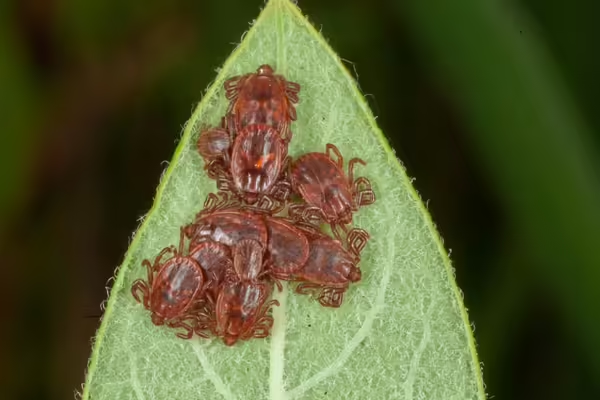
URBANA, Ill. — The invasive Asian longhorned tick, which can pose a health risk for humans, animals, and livestock, has been found in Illinois for the first time. Residents of west central Illinois are advised to watch out for and report sightings of this new pest.
The Asian longhorned tick, Haemaphysalis longicornis, is an invasive pest of concern for livestock because severe infestations can impact livestock production. An Asian longhorned tick was found on April 12 in Morgan County during an Illinois Department of Public Health tick surveillance. Two more ticks were found on April 24, and after confirming the species with National Veterinary Services Laboratory entomologists, IDPH reported the sightings on May 6. Asian longhorned ticks were first confirmed in the U.S. in 2017, but it has likely been here longer and is found in 19 other states.
Teresa Steckler, Illinois Extension commercial agriculture specialist in cattle, says Asian longhorned ticks have been found in large numbers on livestock, sheep and cattle so far, resulting in severe distress and, in some cases, death.
“Spring is a busy time for farmers and ranchers as they put cattle out to pasture, but it’s important that producers take some time to look for tick infestations,” Steckler said. “People need to be more vigilant and take preventative measures to protect their livestock, pets, and themselves from tick bites.”
Asian longhorned ticks are light brown and very small, often smaller than a sesame seed. They are found in low-lying swampy areas, wooded areas, and tall grasses. A female tick can lay up to 2,000 eggs without a male, meaning one female can create a new population.
If you find a tick attached to an animal or a person, remove it immediately using tweezers to grasp the tick as close to the skin as possible and pull gently. Wash the affected area with soap and water.
Steckler says Asian longhorned ticks appear to be susceptible to chemical products commonly used to treat other ticks on cattle. Ranchers should consult with their veterinarian to develop a plan for ectoparasite prevention. Mowing pastures and now allowing livestock in wooded areas where the tick has been found will also help reduce the number of attached ticks.
Report sightings of the tick to the Illinois Department of Agriculture by calling (217) 782-4944. Residents of Morgan County and the surrounding counties can also help monitor the spread and population size of Asian longhorned ticks and other species by collecting and submitting ticks by mail or to their local Illinois Extension office. Ticks should be stored in a sealed container with rubbing alcohol and labeled with the date and location of collection. Send ticks in sealable plastic bags without alcohol to Teresa Steckler, 354 State HWY 145 N, Simpson, IL 62985. If the tick was removed from pets or livestock, please note if the animals were treated with an ectoparasiticide drug and which one.
Connect with a local Extension office at go.illinois.edu/ExtensionOffice. For more information and help with identification and submitting ticks, download a factsheet at go.illinois.edu/ALTfactsheet. Learn more about ticks in Illinois at extension.illinois.edu/ticks.
The Illinois Department of Agriculture, Illinois Department of Public Health, and Illinois Department of Natural Resources are monitoring the situation in partnership with the USDA. IDPH, in collaboration with the Illinois Natural History Survey medical entomology program, tracks the location of several species of ticks through its Illinois Tick Surveillance Map.
Non-native invasive species are plants, animals, and insects that spread quickly, cause ecological or economic damage, and are hard to remove once established. Across the state, Illinois Extension staff and volunteers work with communities to identify potential invasions, remove invasive species, and restore natural areas. Explore more about invasive species at go.illinois.edu/invasive.
SOURCE: Teresa Steckler, University of Illinois Extension commercial agriculture specialist.
PHOTO CREDIT: Jim Occi, Rutgers Center for Vector Biology
Illinois Extension leads public outreach for University of Illinois by translating research into action plans that allow Illinois families, businesses, and community leaders to solve problems, make informed decisions, and adapt to changes and opportunities. Illinois Extension is part of the University of Illinois Urbana-Champaign College of Agricultural, Consumer and Environmental Sciences.